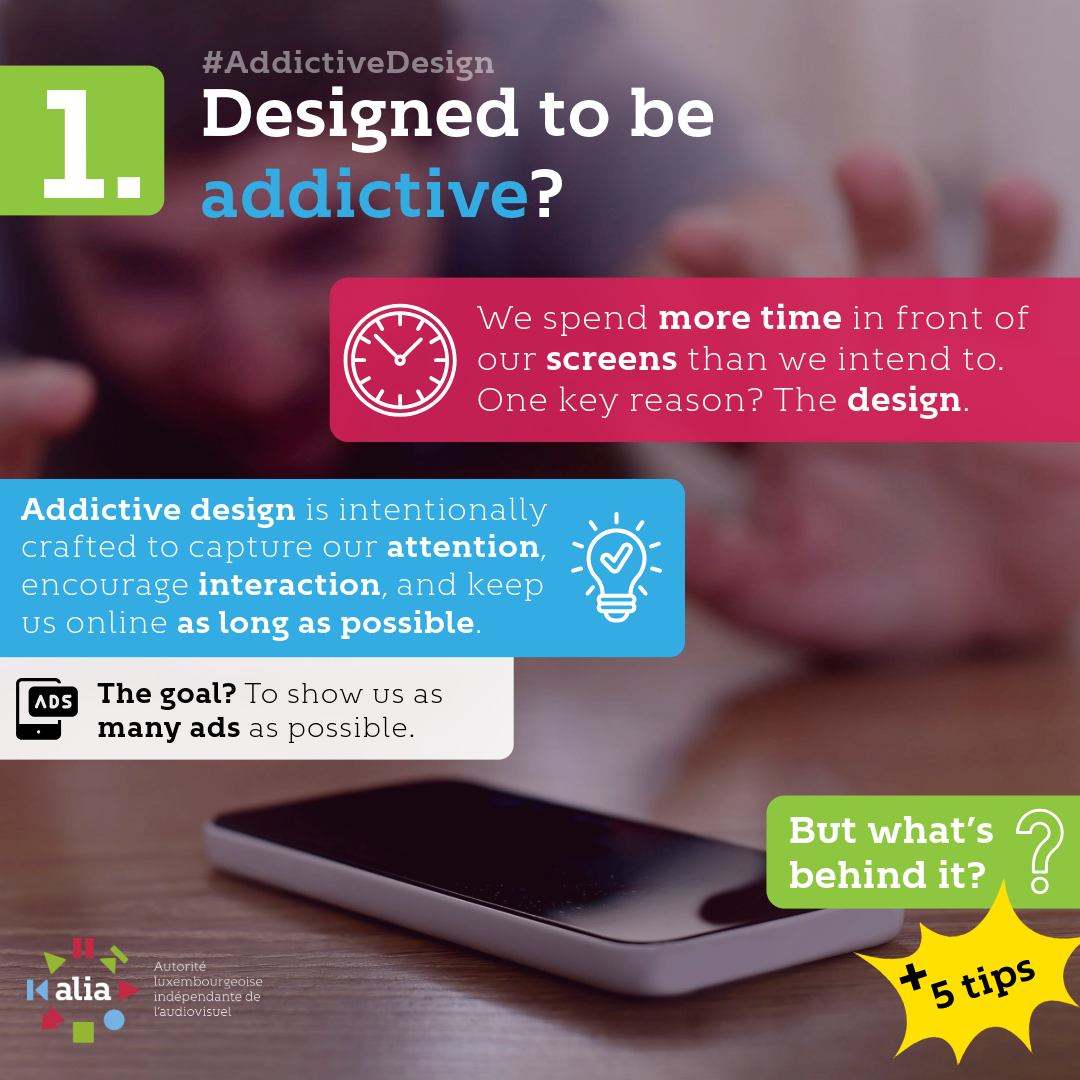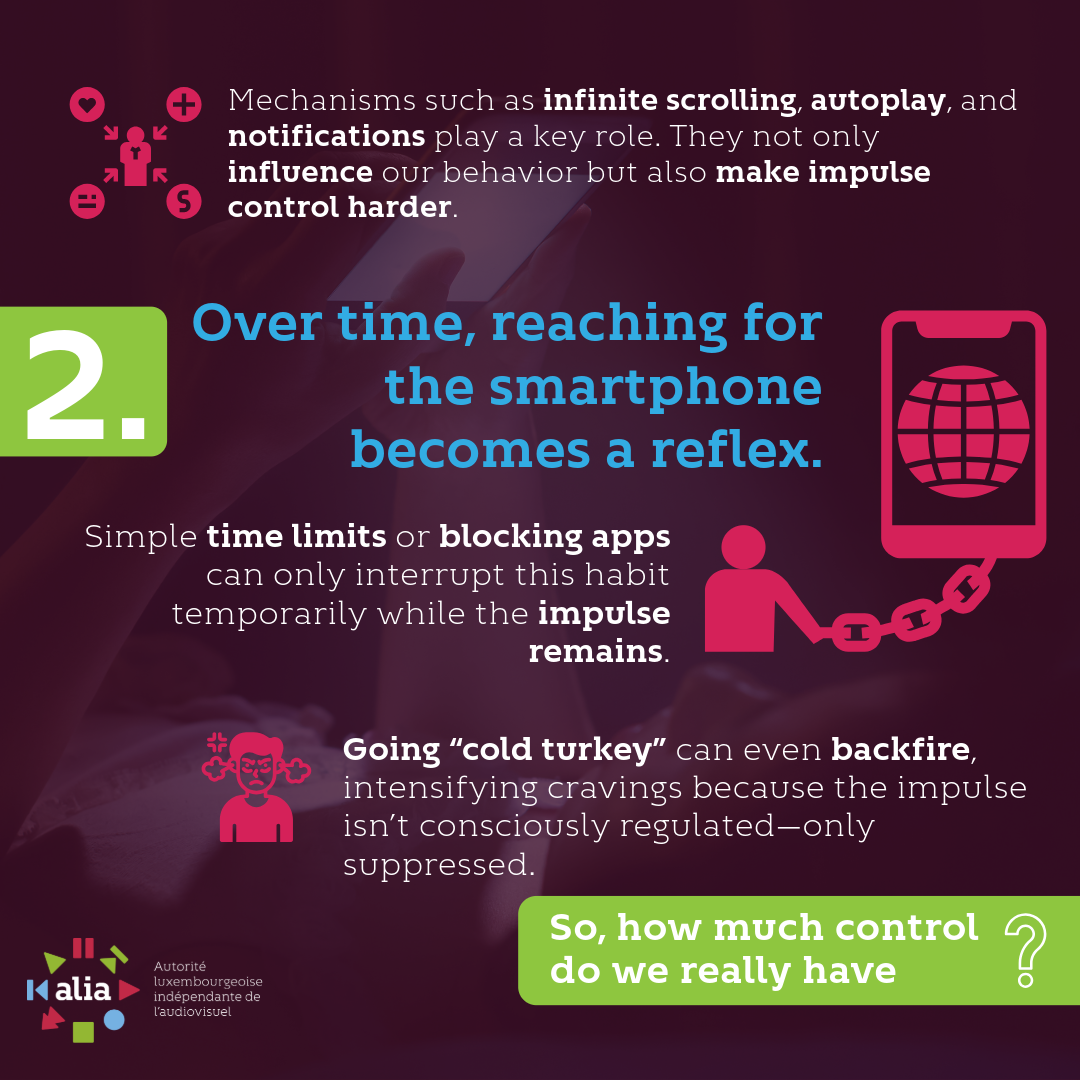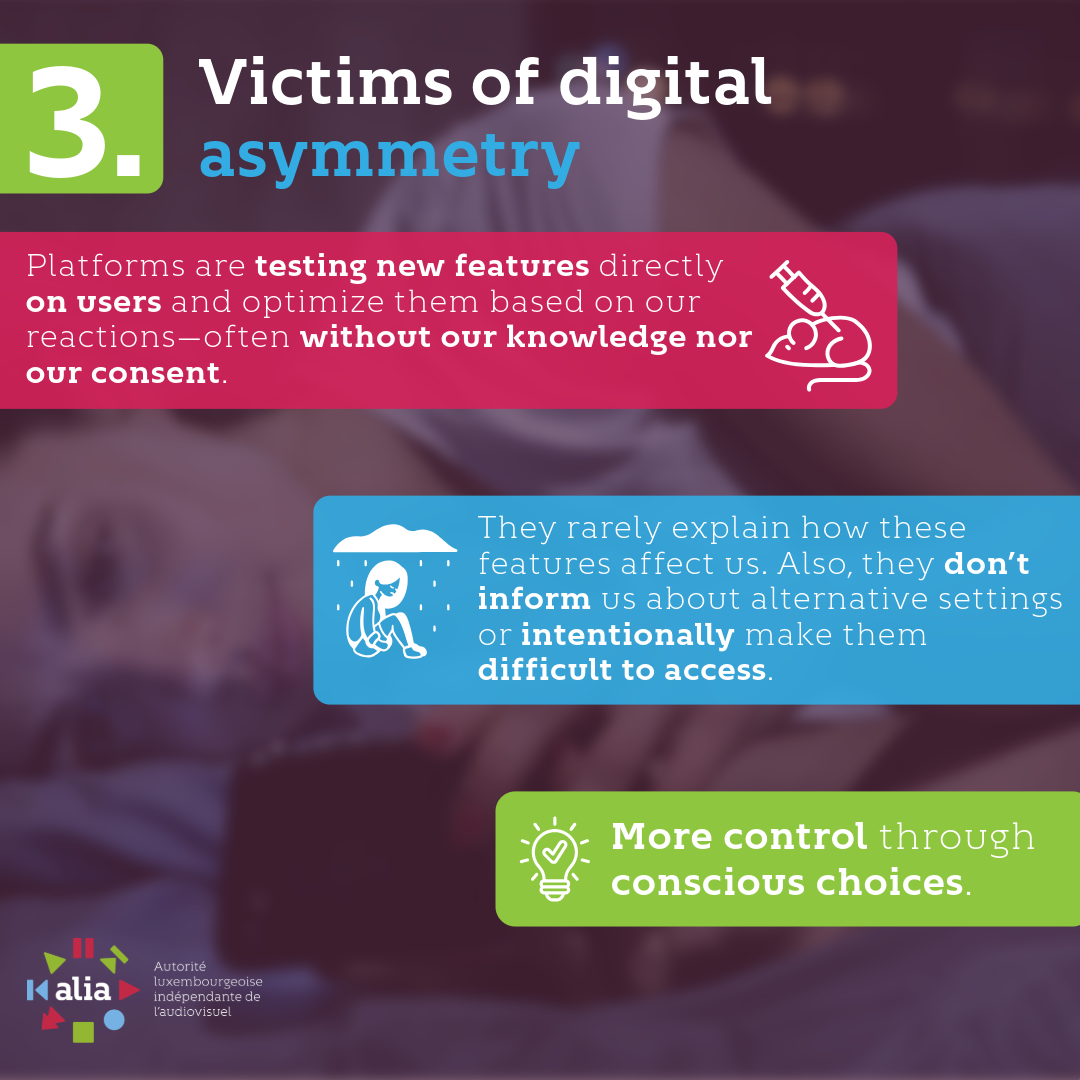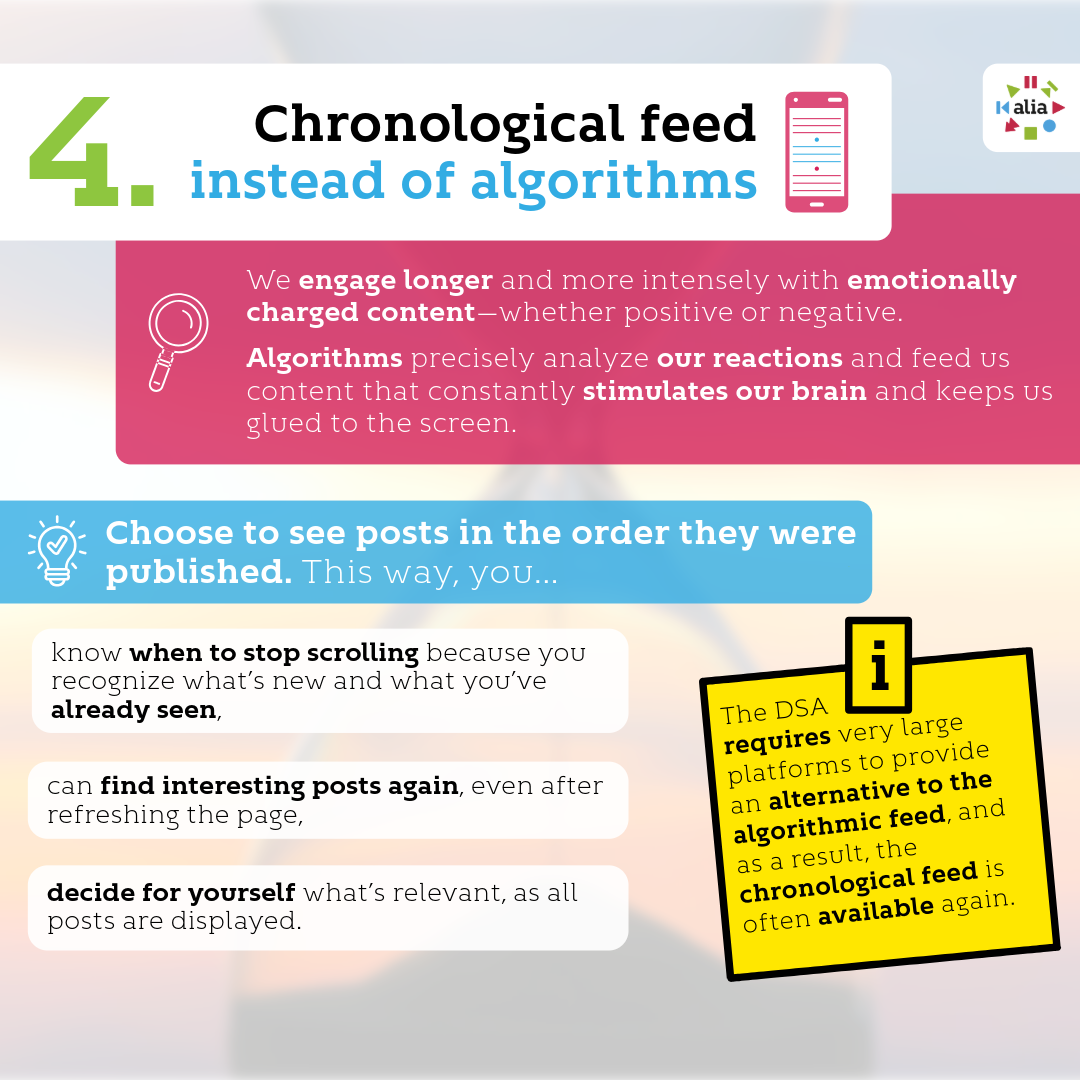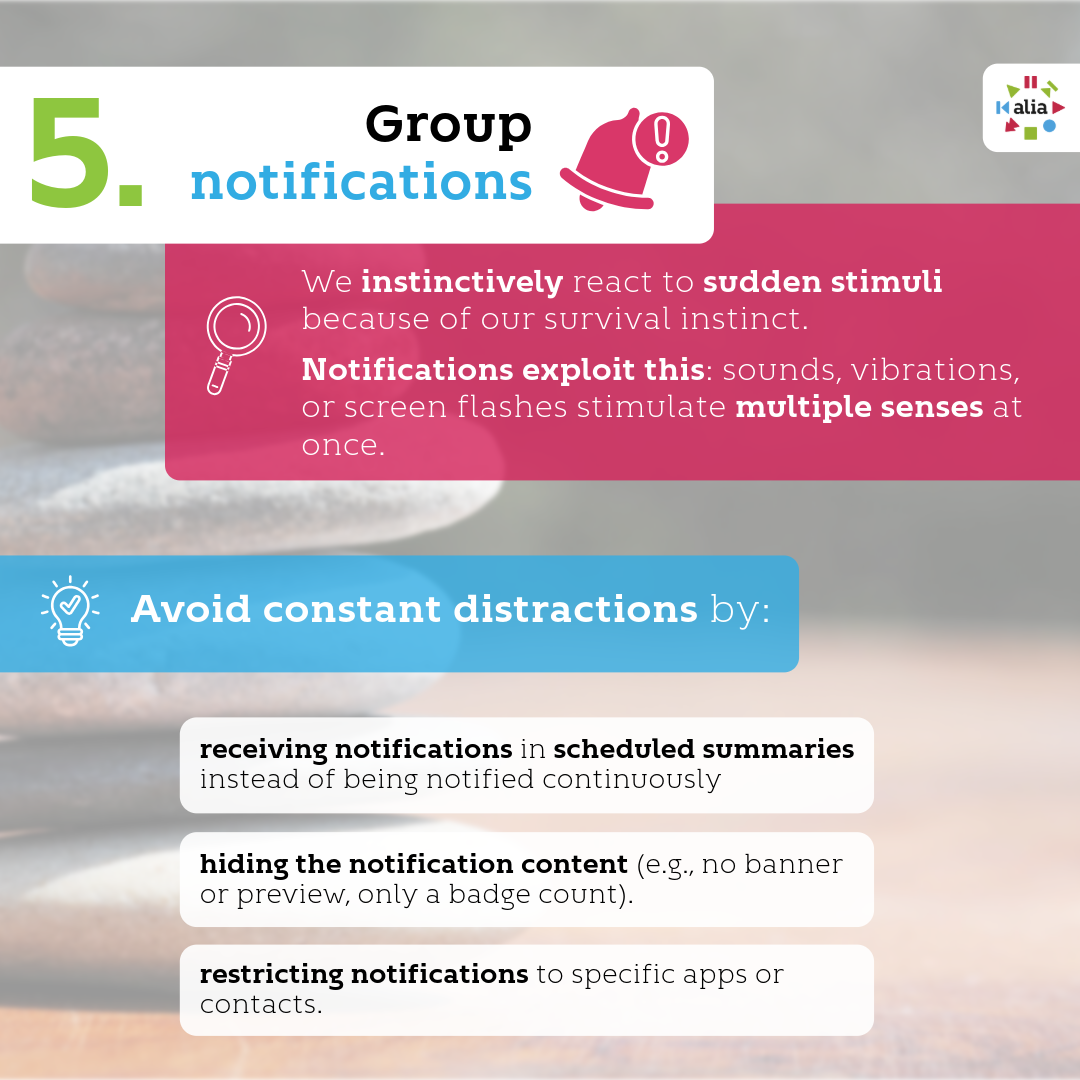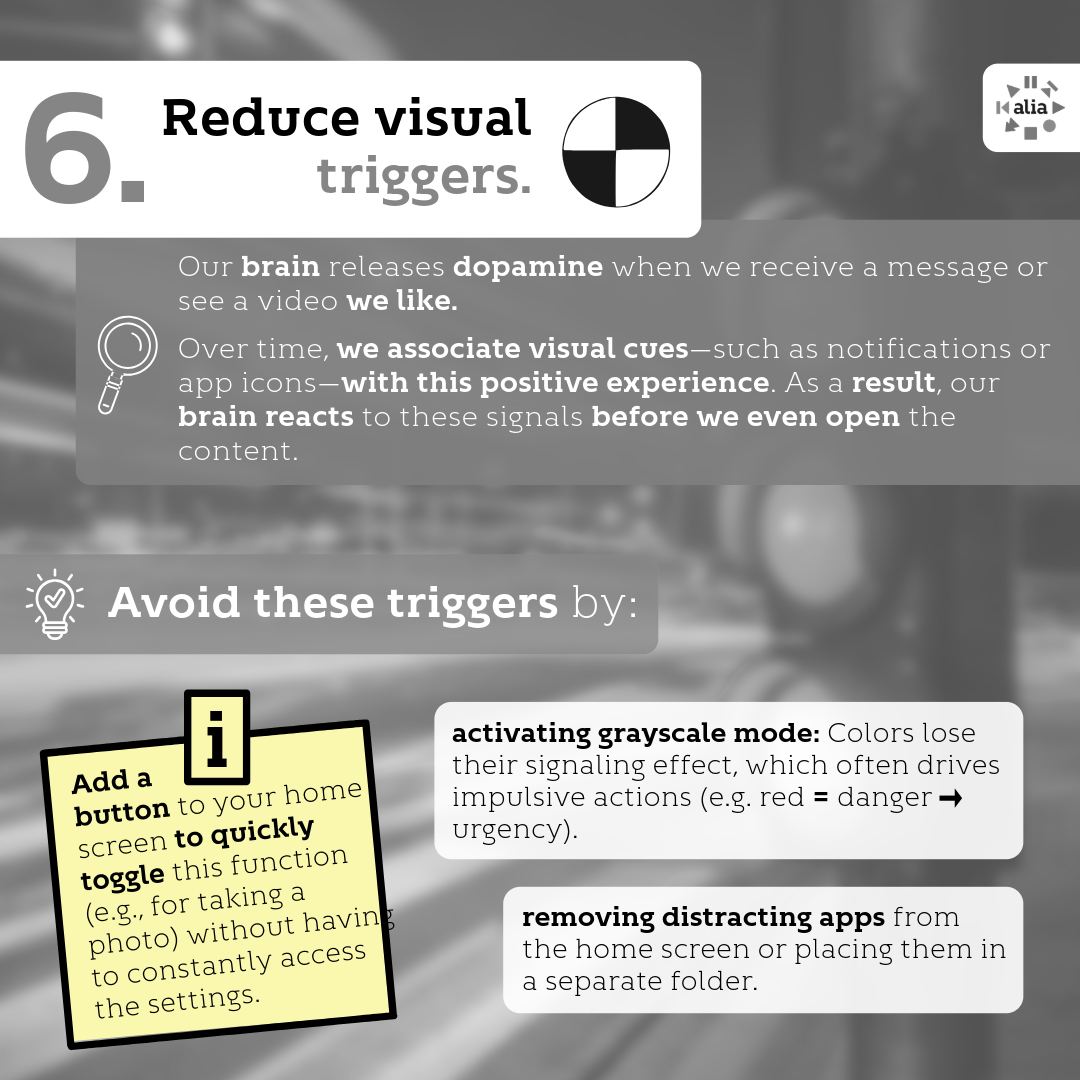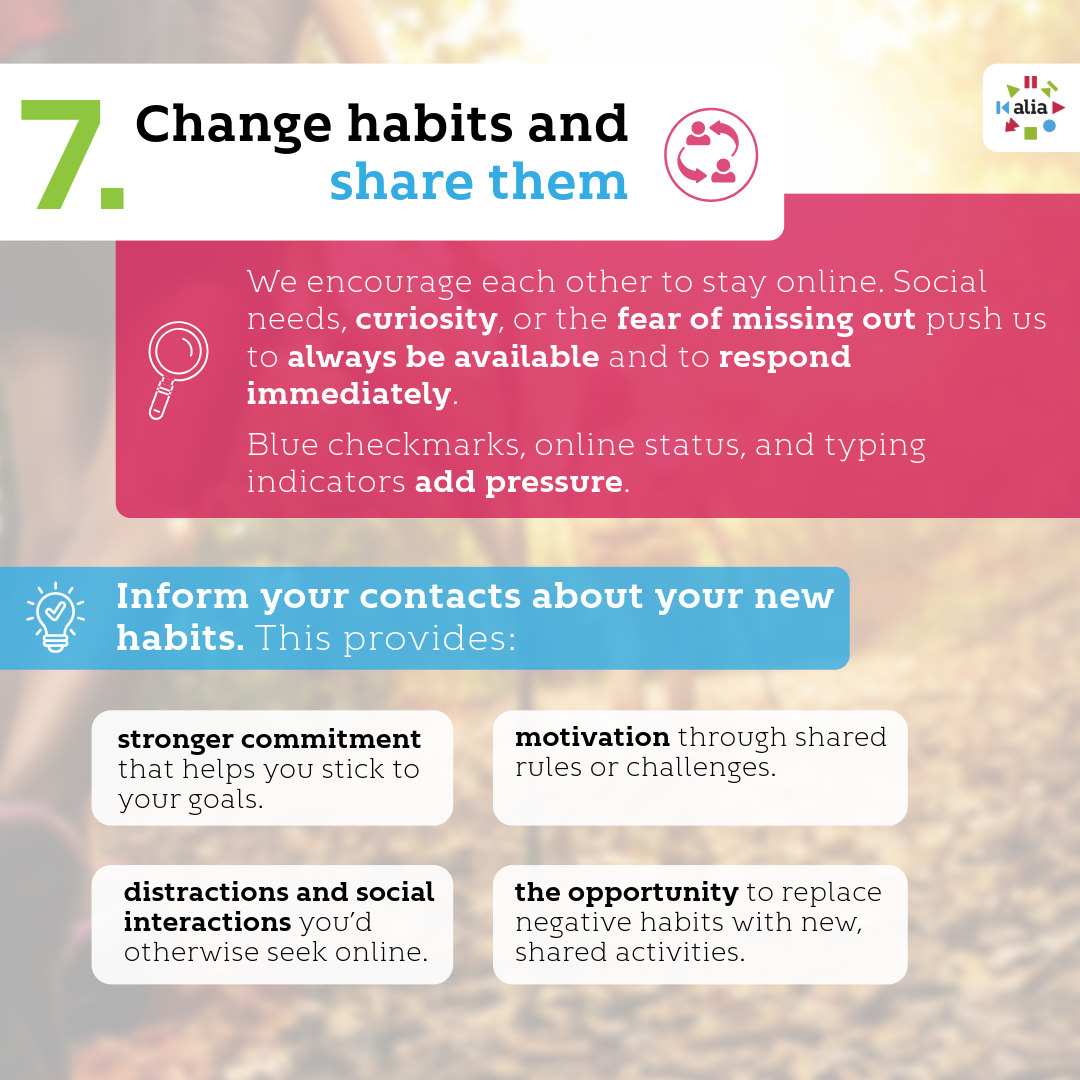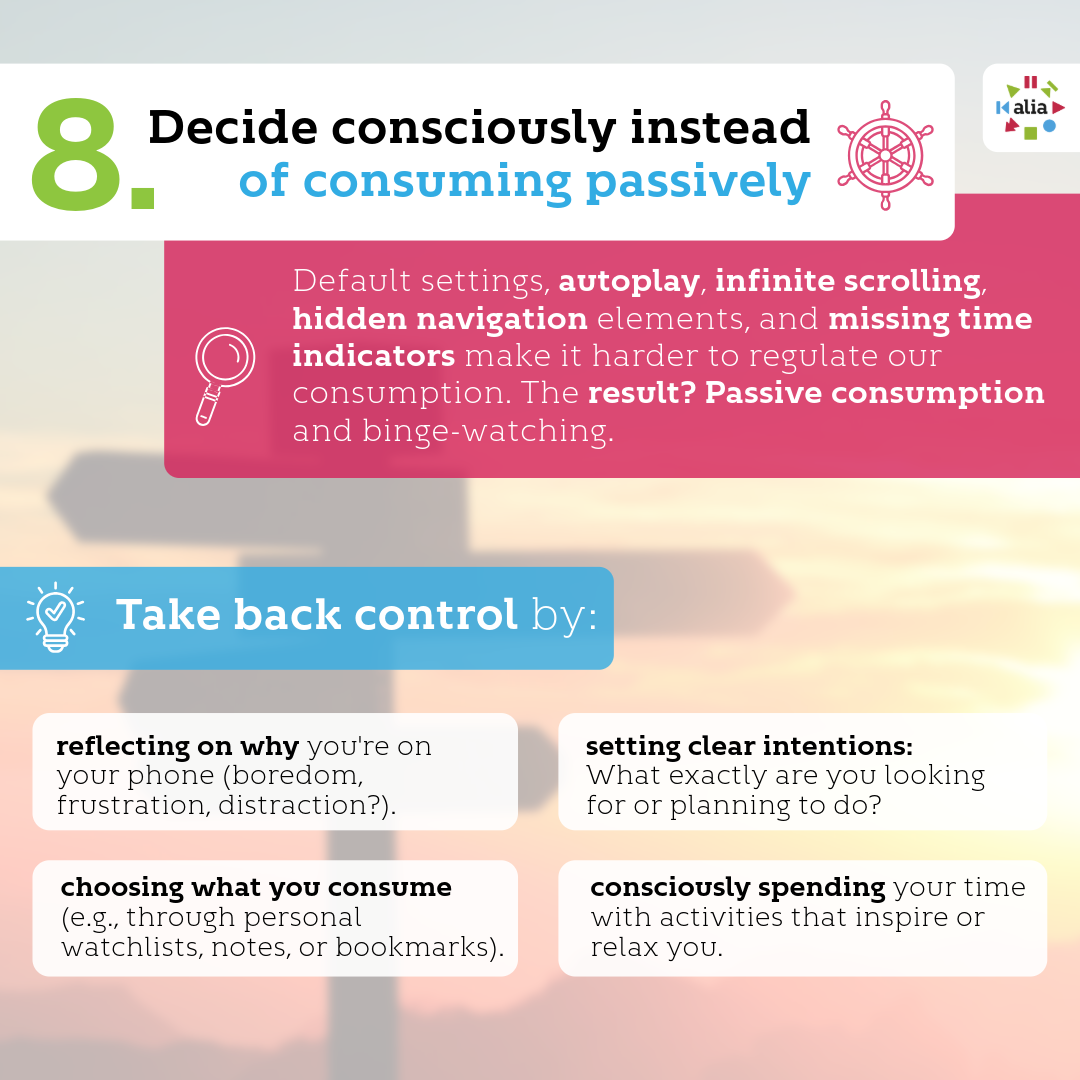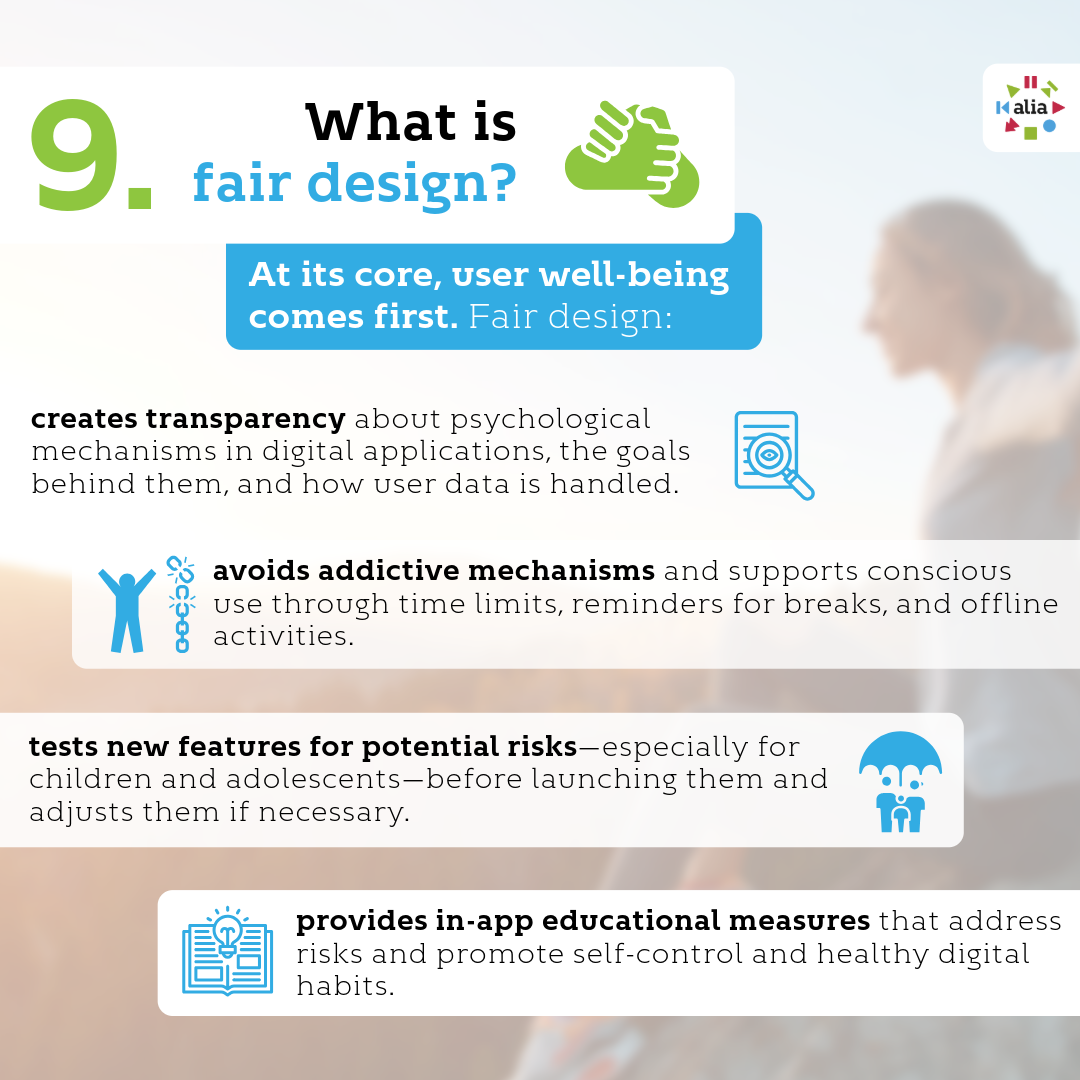Complete PDF - English Version
In order to help users better control their media consumption, ALIA has gathered information and practical tips on the topic of “Addictive Design.”
Here, you will find all the materials provided by ALIA.
In order to help users better control their media consumption, ALIA has gathered information and practical tips on the topic of “Addictive Design.”
Here, you will find all the materials provided by ALIA.
Addictive design is deliberately created to capture our attention, stimulate our interaction, and keep us online for as long as possible, with the aim of showing us as many advertisements as possible.
Complete PDF - English Version
Complete PDF - Luxembourgish Version
Complete PDF - French Version
